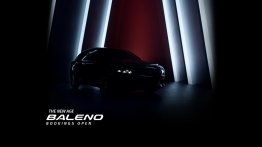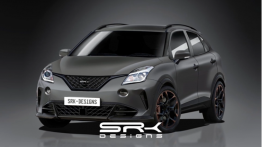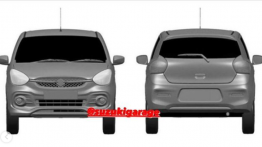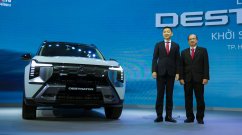While the Maruti Swift can be credited for creating the B-segment hatchback market in India, Hyundai took things a step further with the Elite i20, which was launched back in August 2014. The fact that over 10,000 units of the i20 find homes every month is a further reason for Maruti to offer a competitor. The competitor in question also brings back the ‘Baleno’ name to India, which in its previous sedan avatar was considered an expensive alternative to the Esteem. Names apart, is the new Baleno just a fancier Swift, or is it as ‘Elite’ and ‘Jazz-y’ as its rivals?

Exterior:
The Baleno takes its design inspiration from the Suzuki iK-2 concept presented at the Geneva motor show. While looks are subjective, its noteworthy to point out that the overall styling of the car is distinctive. Yes, the headlights seem taken from the Swift, but aside that, the Baleno looks unlike any Maruti on sale.
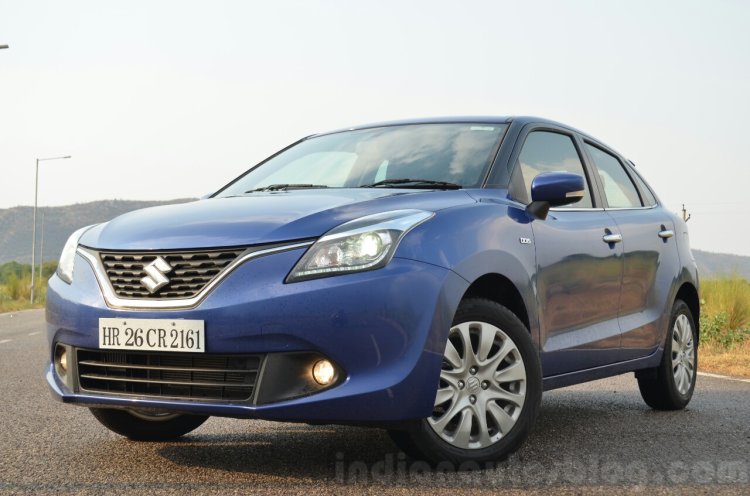
If Hyundai calls the Elite i20 ‘Fluidic’, Maruti refers to the Baleno’s design as ‘Liquid Flow’. The car maker is keen to point out that the side haunches are inspired by flow of liquids, as the name suggests.
Towards the rear, it is interesting to note that there are no ‘Maruti’ or ‘Suzuki’ badges, just the latter’s logo. Also, apart from the ‘Baleno’ name, there are no badges to tell onlookers if your’s is a petrol or a diesel, base or top-end variant.
Overall, on the styling front, we personally like the Baleno’s looks.
Interior:

The interior of the Baleno is a mix of two stories - The first one impresses you with a clutter-free, no-nonsense design, while the second disappoints with its mediocre build quality.
All variants of the Baleno get an all-black dashboard with black seats, which is something we like; enough with the beige! The center console of the Baleno is, as we described clutter free: the 2-DIN music system (SmartPlay system in case of the top-end model), and controls for the automatic AC (available from the second variant) occupy minimum space.
The design of the center tunnel too is well designed to say the least: It rises to a comfortable height - wherein the gear lever can just be flicked into gates - and then steadily descends to make way for the center armrest.
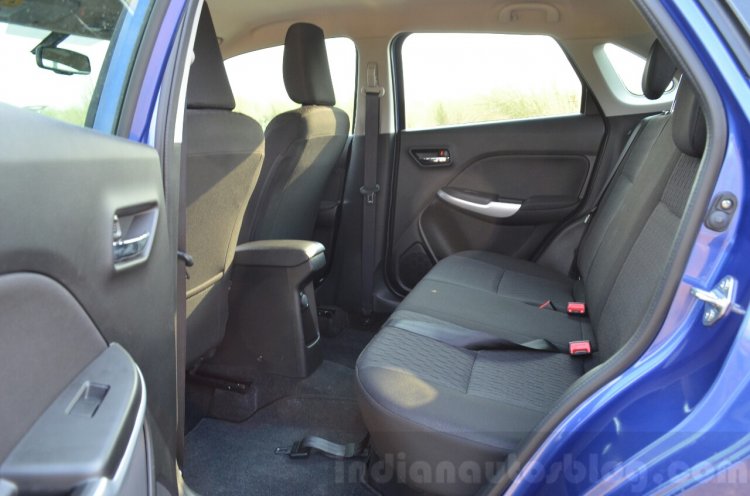
Also seen on the top-end Alpha variant is a new instrument cluster with a color TFT screen. The screen appears good to look at, but is sadly mostly eye-candy: Apart from the standard parameters, there are just different ways to explain fuel efficiency. There’s also a power/torque usage meter, which should appeal to drivers under the age 8!
Coming to the quality of materials used, you guessed it, it feels just like the Swift. Aside from the power window switches which are carried over from just about any Maruti product, the door pads feel too plasticky, the silver trim pales in comparison to the quality of materials used by Hyundai or VW, and there’s a general lack of attention to detail, which is just the opposite in case of the i20 and Polo.
In our reckoning, the VW Polo and the Hyundai Elite i20 are miles ahead in terms of fit-and -finish, and even the new Honda Jazz feels better screwed together than the Baleno.
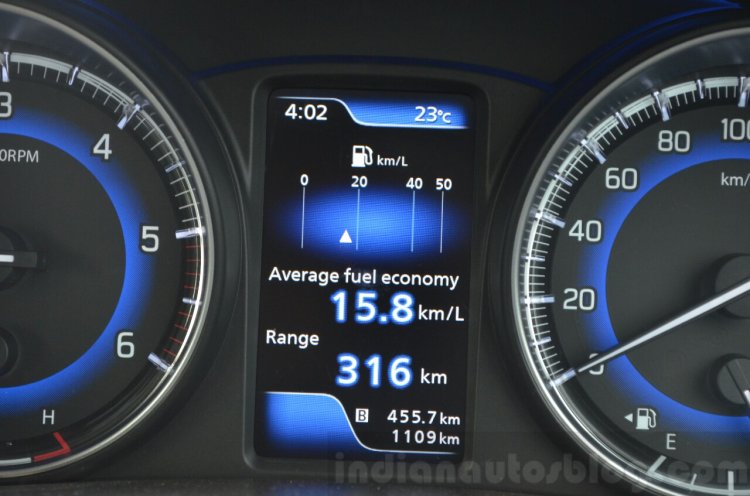
Coming to the comfort, with the front seats adjusted for 6-foot adults, similarly sized adults will not complain about legroom at the rear: the Baleno’s 2,520 mm wheelbase is only 10 mm shorter than the Honda Jazz’s, which, will continue to be the most spacious car in this class.
The rear seat floor is also relatively flat, though shoulder width is typically the two-and-a-half adults. For the space on offer, we feel Maruti could have given better cushioning on the seat backs, they’re not as comfortable to sit on as say a VW Polo or a Hyundai Elite i20. However, the Baleno has clearly trumped the smaller Swift by a considerable margin in the real estate department.
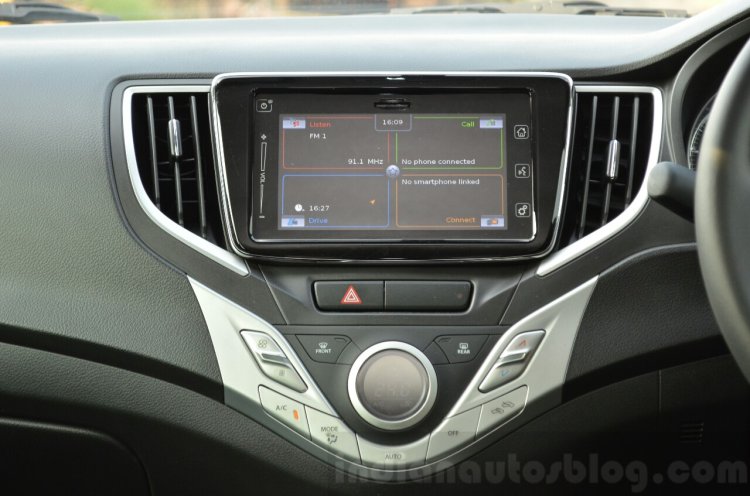
The interior of the Baleno, to sum up, is spacious and well-equipped, and even well designed. It feels like a missed opportunity that the build quality is not as good as the competition.
Engine and Gearbox:
The Maruti Baleno DDiS 190 is powered by the same engine and gearbox used on the Swift. The 1.3-liter Fiat-borrowed engine develops 75 PS and 190 Nm of torque on the Baleno, as it does on the Swift.
First up, NVH levels are just a minor step up compared to the Swift, which is not exactly the quietest car in its segment itself.
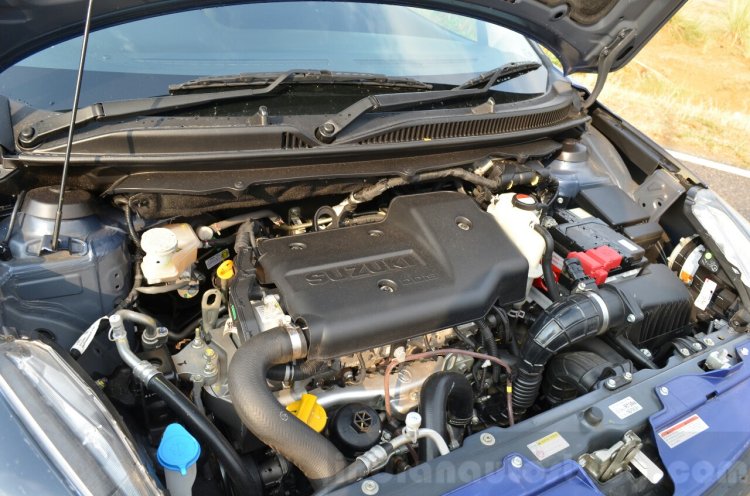
To drive, the Baleno diesel feels familiar to the Swift diesel, but it is evident where engineers have made changes. For example, where the first and second gears of the Swift feel short, and inline for city use, they feel a bit relaxed on the Baleno. The longer gear ratios continue to be observed on 3rd, 4th and 5th too, which has an upshot in making the Baleno a great highway cruiser. In 5th gear at 100 km/h, the Baleno ticks a little above 2,100 rpm, and once we were certain there was no traffic, we saw the needle move past 160 km/h.
Bottom line: If you’re expecting the 100 kg weight loss to have a drastic improvement in performance, you’re going to be disappointed. Maruti’s engineers seem to have used the weight loss and the engine tuning to aid fuel efficiency rather than outright performance.
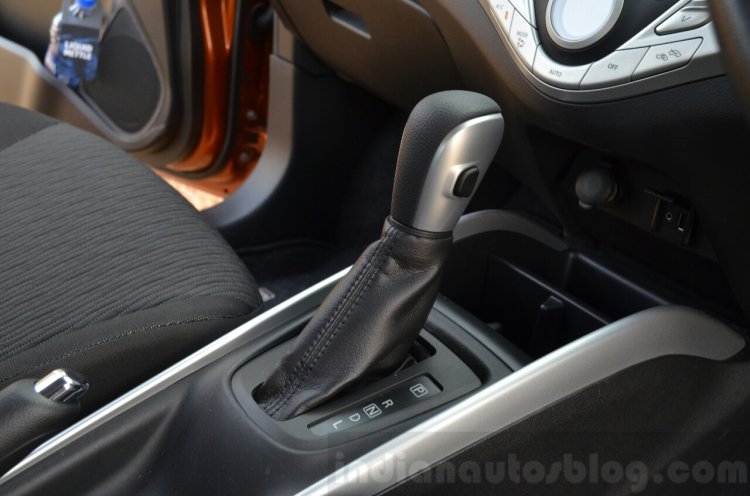
The Baleno petrol, much like the diesel, uses the 1.2-liter K-Series motor from the Swift, which makes 84.3 PS and 115 Nm of torque. It is paired to a 5-speed manual or a CVT, the latter is solely avaialable on the Delta variant.
The manual first. The good news is that the weight loss, and the improved gear ratios have a positive impact on performance. The K-Series engine has a willingness to rev to its redline, and we’re happy to report that performance is more than enough for city and highway use. Even at lower revs, the Baleno petrol does not feel sluggish, while at the top-end, this engine has enough grunt to put a smile on an enthusiast.
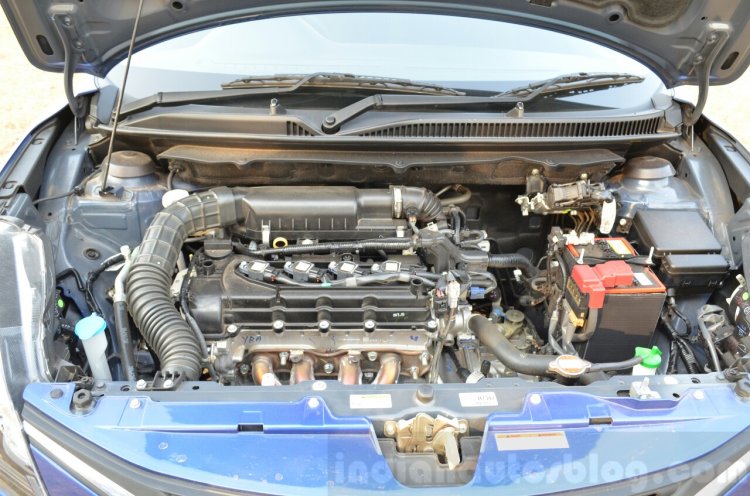
Coming to the CVT, which is expected to account for significant demand, we’re again happy to say that performance is more than adequate, whether you’re driving at city speeds or on the highway (the CVT Baleno was able to reach speeds of 140 km/h without much hesitation). At slower speeds, the Baleno CVT moves with a sense of urgency that you wouldn't find on the Jazz CVT, the closest competitor in this segment.
So there you go. While the weight loss has a noticeable improvement in performance in case of the petrol, the diesel variant of the Baleno redeems itself by being a stable highway cruiser.
Ride and Handling:
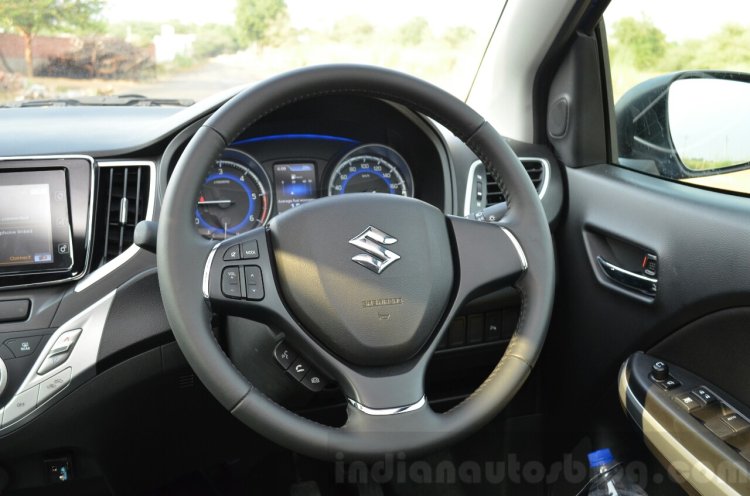
Maruti is gung-ho about the Baleno’s platform, what it calls the new generation platform by Suzuki, which uses 41 percent of high-tensile strength steel, the highest for this class. The increased use of high-strength steel improves crash protection, reduces weight and improves the rigidity, claims the Maruti. The last bit with the rigidity is supposed to have improved ride and handling, says Maruti.
In comparison to the Swift (the diesel variant of the Swift is 100 kg heavier than the Baleno), the Baleno definitely has a more plusher ride quality. Potholes and bumps that you generally find on city streets are ironed out rather well, though as speeds progress, the Baleno shows its slightly stiffer setup.
On the handling front, its again a mixed response that we got: The chassis seems pretty capable but the steering feels a bit light in comparison. However, the straight Rajasthan highways proved that the Baleno is extremely stable at triple digit speeds, it feels a lot more confident to drive than say a Swift.
Brakes and Safety:

All variants of the Baleno get ABS, EBD and dual airbags as standard, which is indeed commendable. However, we’ve a bone to pick in the braking department. Our diesel test car was extremely skittish under hard braking. Also, the brakes themselves, on this particular test car, didn’t feel overly reassuring to use. The brakes on our petrol test car were much better however in comparison.
Fuel Efficiency:

No prizes for guessing that the Baleno is the most fuel efficient car in its class, with the diesel returning 27.39 km/l and the petrol good for 21.4 km/l. While our media drive was too short to conduct a full-fledged fuel efficiency test, we can vouch for numbers in excess of 21 km/l for the diesel and 18 km/l for the petrol, when driven on the highway. That being said, Maruti has given the Baleno a 37 liter tank, another efficient packaging measure we suppose.
Verdict:
Our grouses with the Maruti Baleno are that the interior is not special enough for this segment, the build quality has room for improvement, and finally the overall driving experience doesn’t feel drastically different from a Swift.
However, Maruti has truly delivered where it matters the most: the price. At INR 6.16 lakhs, ex-Showroom for the base diesel and INR 4.99 lakhs for the petrol, the Baleno suitably undercuts its rivals and offers ABS, EBD and dual front airbags. Forget the competition, the base Baleno is a mere INR 35,000 more than a Swift LXi, which offers no safety features whatsoever.
Coming to the top-end variant, while features like HID headlights and the Apple CarPlay system are unavailable in the competition, make no mistake that the Baleno feels no where as special as the Elite i20 or a VW Polo, as a car you want to spend time in. And that could be a deal breaker for many who are upgrading from smaller hatchbacks.





























































































